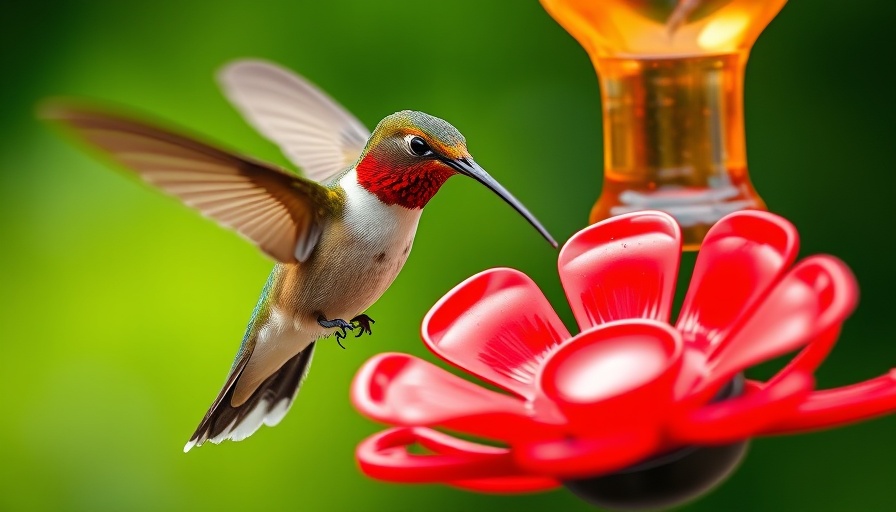
The Wonderful World of Hummingbirds
Hummingbirds, known for their iridescent feathers and rapid wing beats, are among nature's most captivating creatures. Observing these small marvels can transform your backyard into a vibrant ecosystem, filled with movement and color. Not only are they beautiful, but they also play a crucial role in pollination, making them integral to both garden health and biodiversity.
Understanding Their Needs: Nutrition Is Key
As Wayne Klockner from the American Birding Association emphasizes, hummingbirds possess an incredibly fast metabolism. Their daily lives revolve around seeking food to fuel their energy-intensive flight patterns. Therefore, to attract these birds, your garden must cater to their foraging habits. “Ensure that different species of flowers bloom at various times,” suggests Noah Perlut, an ornithologist. This staggered blooming ensures that hummingbirds find a consistent food source throughout their active seasons.
Flower Selection: Native is Best
When planning your garden, it's essential to select suitable plants. Native flowers, particularly those that are bright and tubular, are excellent at drawing in hummingbirds. Flowers like bee-balm and trumpet vine are favorites among these birds. As Holly Grant from NestWatch points out, “Red tube-like flowers are particularly appealing due to their shape and nectar availability.” Incorporating a variety of colors, including not just red, but also orange, yellow, and pink, can improve your chances of attracting more hummingbirds.
Feeding Tips: Sugar Water Solution
In addition to flowers, consider placing sugar-water feeders in your garden. Klockner recommends a simple mix: combine one part sugar to four parts water. It’s vital to keep the feeder clean, especially during warmer months when sugar water can spoil quickly. “Replace the mixture every 2-3 days to ensure quality,” he advises. This quick energy source is especially important for active hummingbirds.
Shelter: Creating a Safe Habitat
A well-planned garden isn’t just about food; it also provides safety. Native shrubs and plants create essential shelter for hummingbirds, allowing them to perch and rest. Given that these birds are naturally cautious, a feeder positioned close to vegetation can enhance their sense of security. “Hummingbirds prefer locations with available cover,” explains Klockner, indicating that by offering a more natural setting, you can make your yard a safe haven for them.
Benefits of Attracting Hummingbirds
Beyond mere aesthetics, creating a hummingbird-friendly garden fosters biodiversity. These birds are excellent pollinators, aiding in the reproductive process of various plants. By attracting them, you're not just enriching your backyard but also contributing to a healthier environment. A thriving hummingbird population can signify a balanced ecosystem.
Conclusion: The Path to a Thriving Backyard
Implementing these strategies can transform your yard into a lively ecosystem filled with hummingbirds throughout the season. From ensuring a steady food supply to providing shelter, these small changes can lead to significant rewards. As you’ve learned, hummingbirds aren’t just additions to your garden; they’re critical participants in its health and vitality. Get started this spring, and enjoy the delightful presence of these beautiful birds!
 Add Row
Add Row  Add
Add 




 Add Row
Add Row  Add
Add 


Write A Comment